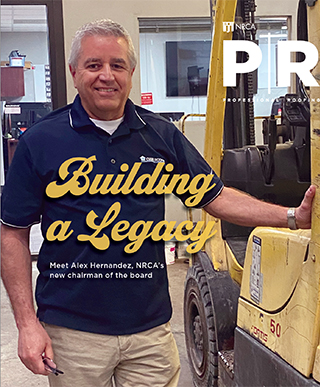The term "fully adhered" is used by some manufacturers and specifiers to identify adhered single-ply membrane roof system configurations or refer to the adhesion of rigid board insulation to underlying substrates. But this terminology can create application and performance expectations that are unrealistic and likely cannot be achieved.
Definitions
When considering the term "fully adhered," it is important to realize it is not specifically defined by the U.S. roofing industry.
The industry's consensus-based terminology standard, ASTM D1079, "Standard Terminology Relating to Roofing and Waterproofing," does not include terms or definitions for fully adhered, adhered or adhesion.
Similarly, the glossary contained in the appendix of The NRCA Roofing Manual: Architectural Metal Flashing, Condensation and Air Leakage Control, and Reroofing—2014 does not contain a specific definition for the term fully adhered. The manual defines "adhere" as: "To cause two surfaces to be held together by the combined strength of the molecular forces and the mechanical interlocking achieved between adhesive and the bonded surface … ."
Merriam-Webster defines adhere (and its derivatives adhered and adhering) as "to hold fast or stick by or as if by gluing, suction, grasping, or fusing." Similarly, the term "fully" is defined as "in a full manner or degree; complete."
Although not specifically defined, the implication of fully adhered is 100 percent adhesion between two surfaces or materials.
Realistic expectations
Experienced roofing industry professionals realize the expectation of complete adhesion between two surfaces such as a single-ply membrane and underlying rigid board insulation is unrealistic and likely cannot be achieved in field applications.
Taken at its most literal sense, complete adhesion between a single-ply membrane and a rigid board insulation substrate is impossible because there will not be membrane adhesion at the insulation boards' joints.
Also, thickness variability in insulation boards and its effect on adhesion needs to be considered. For example, the U.S. product standard for polyisocyanurate insulation, ASTM C1289, "Standard Specification for Faced Rigid Cellular Polyisocyanurate Thermal Insulation Board," permits a board thickness tolerance of ±1/8-inch and crushing and depressions up to 1/8 of an inch in depth on up to 10 percent of a polyisocyanurate insulation board's surface area. Because reinforced single-ply membranes tend to lay relatively flat, having an adhered membrane application readily conform to and remain completely adhered to the recognized irregularities in insulation boards is unlikely.
Irregular, nonsmooth roof deck surfaces create similar situations. Because board-type insulation is relatively rigid, it generally will not readily conform to irregularities in roof deck substrates. Individual rigid boards tend to rest on the high points in a roof deck's finished surface and span the low points.
As a result, rigid board insulation seldom is completely adhered to roof deck substrates. It generally is adhered at the relative high points in the roof deck's surface and may be partially or marginally adhered and even unadhered at the relative low points. Specifying smaller insulation board sizes (4 by 4 feet instead of 4 by 8 feet) generally is suggested to minimize rigid insulation boards from spanning substrate low-point irregularities.
In practice
The concept of lacking 100 percent, complete adhesion between two adhered surfaces is not new to the roofing industry; it has long been recognized in the application of built-up roof membranes where voids between plies can occur. To address this, NRCA's Quality Control Guidelines for the Application of Built-up Roofing indicates interply moppings are intended to be continuous; however, voids of limited size are permitted provided overlapping voids do not occur between two or more plies. NRCA has maintained this position since the late 1970s, and it has become well-accepted by the roofing industry.
As it applies to adhering rigid board insulation in continuously applied adhesive applications, actual adhesion rates of about 60 to 90 percent are common (even less in some specific instances) in successfully performing adhered roof systems.
On this basis, NRCA recommends the term "fully adhered" be avoided and suggests the term "adhered" for field applications because it is more realistic.
Mark S. Graham is NRCA's vice president of technical services.



